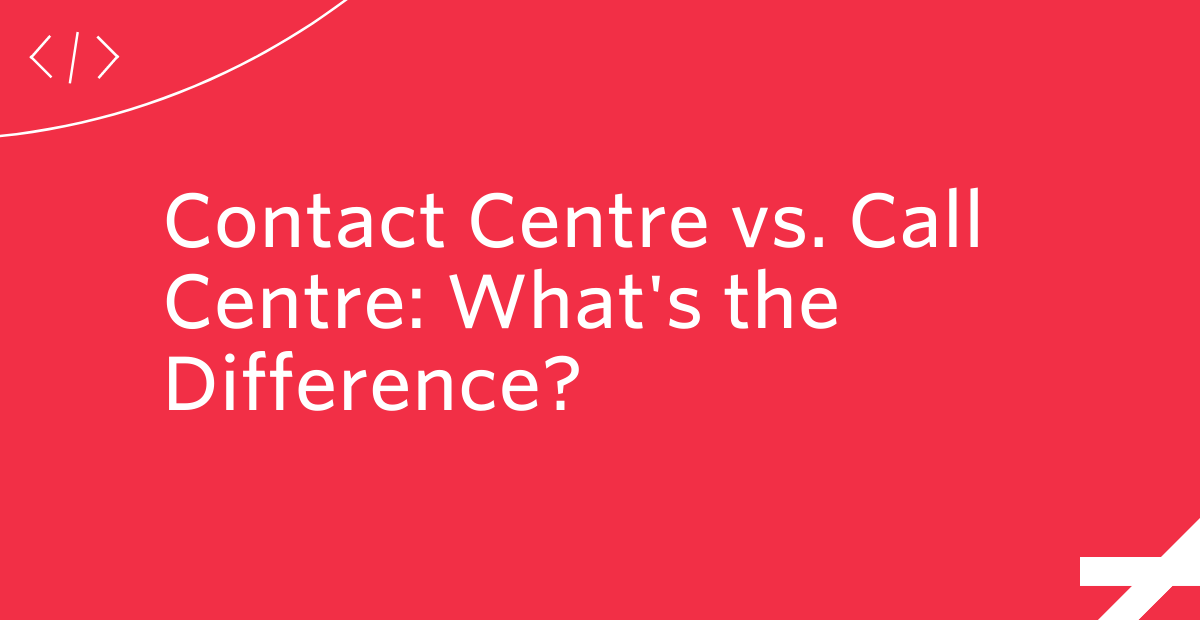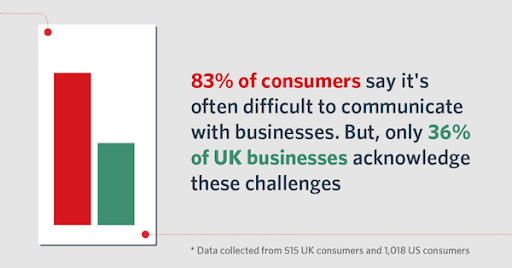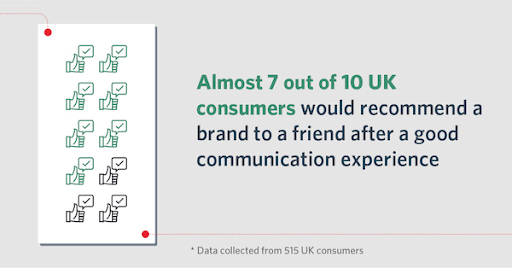Contact Centre vs. Call Centre: What’s the Difference?
Time to read: 3 minutes

One of the ironies of 21st-century life is that virtually all of us carry a phone with us at all times, but most of us rarely use it as an actual phone. We text, email, post on social media, use messenger apps—anything to avoid the hassle of actually making a call.
This preference extends to our consumer lives as well. Would I rather sit on hold for 45 minutes, or spend a few minutes in a chat queue? Even the most soothing of smooth-jazz hold music can’t make the former seem more attractive.
In a survey of UK and US consumers, 83% said it’s often difficult to communicate with a business. However, only 36% of UK businesses acknowledged these challenges.

As consumers demand more ways to talk to your brand than the dreaded phone call, it’s time to rethink the concept of a call centre and work toward a more comprehensive contact centre.
Here’s what you need to know.
What’s the difference between a call centre and contact centre?
These terms sound similar and they’re often used interchangeably, but there’s an important distinction to be made here.
Call centres are focused on phone conversations. Whether it’s a physical location or a software-defined group of remote workers, a call centre is all about… well… taking customer calls.
That setup made perfect sense when a customer’s two options were to call or write you a letter, but a call centre is less than ideal for a modern customer experience.
Contact centres, by contrast, are all about customer conversations. A customer might email your support email address, then call to follow up, then use your social media chatbot to get a few questions answered.
A contact centre agent should have all of that information available to provide a seamless conversation across all of those channels. With the right contact centre solution, customers can use multiple means of contact without having to repeat themselves.
How a Contact Centre Affects Customer Experience
Here’s an example of how customer experience changes for a contact centre versus a call centre.
First, the call centre workflow:
- A customer sends an email about a shipping issue.
- While waiting for a response, he uses the live chat on your website, which requires him to re-enter all of his information.
- The live chat agent directs him to call the call centre.
- He tells the call centre representative the information for the third time.
- While the call centre representative is trying to resolve the issue, he gets an email back.
- The email is from customer support, rather than customer service, and asks for all the pertinent information again.
- The call centre representative puts the customer on hold, and the customer hangs up in disgust.
It’s easy to see how this experience reflects poorly on the company. Now let’s contrast this with a contact centre workflow:
- A customer sends an email about a shipping issue.
- While waiting for a response, he uses the live chat on your website. The agent can see the email communication and uses it to try to help the customer.
- The live agent transfers the interaction from chat to a voice representative.
- The contact centre representative can see the email and chat conversation, is able to review it and solve the issue, and the customer hangs up satisfied.
The contact centre is able to preserve a customer conversation across channels, empowering the representative and speeding up the resolution of the customer’s issue. That means a better customer experience, a better employee experience, and a better reputation for your brand.
Turning a Call Centre into a Contact Centre
It takes a specialised platform to equip your contact centre employees. A contact centre solution should do all of the following:
- Consolidate multiple channels into a single agent user interface, including SMS, chat, phone calls, and more
- Intelligently route customer inquiries to the right agents
- Allow for communication and collaboration between agents to facilitate a seamless customer conversation
- Allow customization of workflows and user interface to suit your needs
- Integrate with CRM and other business applications so agents have a full view of customer history
- Provide business insights to supervisors, enabling reporting and analytics
- Provide a management dashboard that helps supervisors monitor performance and guide agents
A cloud-based contact centre solution can also enable seamless collaboration between remote, in-office and hybrid workers, as well as quick transitions between work and home.
Keep in Contact with Your Customers
A contact centre helps strengthen customer relationships and foster brand loyalty. It’s one key way that your company can differentiate itself from others with similar products or services. All other attributes being equal, customers will choose the company with a better customer support experience. And when customers come back for repeat business, they won’t come alone: our survey found nearly 70% would recommend a brand to a friend after a good communication experience.

Twilio Flex is a programmable cloud contact centre solution designed to improve customer experience, empower employees, and ultimately drive better business results. Check out our interactive demo to see how it works.
Related Posts
Related Resources
Twilio Docs
From APIs to SDKs to sample apps
API reference documentation, SDKs, helper libraries, quickstarts, and tutorials for your language and platform.
Resource Center
The latest ebooks, industry reports, and webinars
Learn from customer engagement experts to improve your own communication.
Ahoy
Twilio's developer community hub
Best practices, code samples, and inspiration to build communications and digital engagement experiences.

